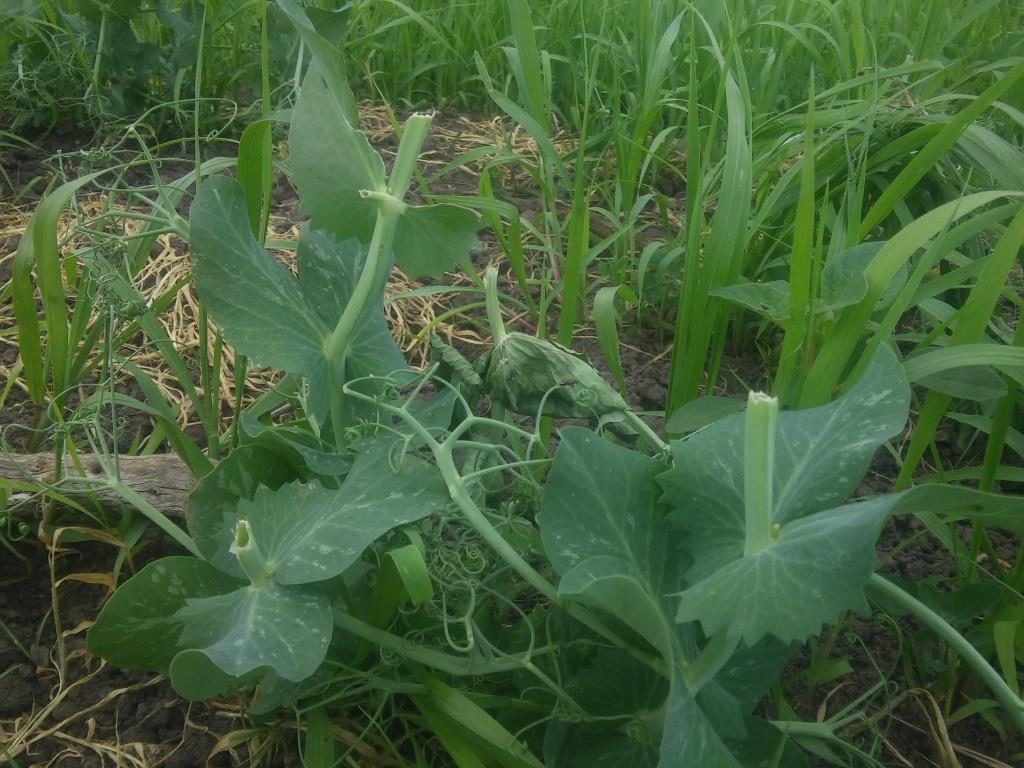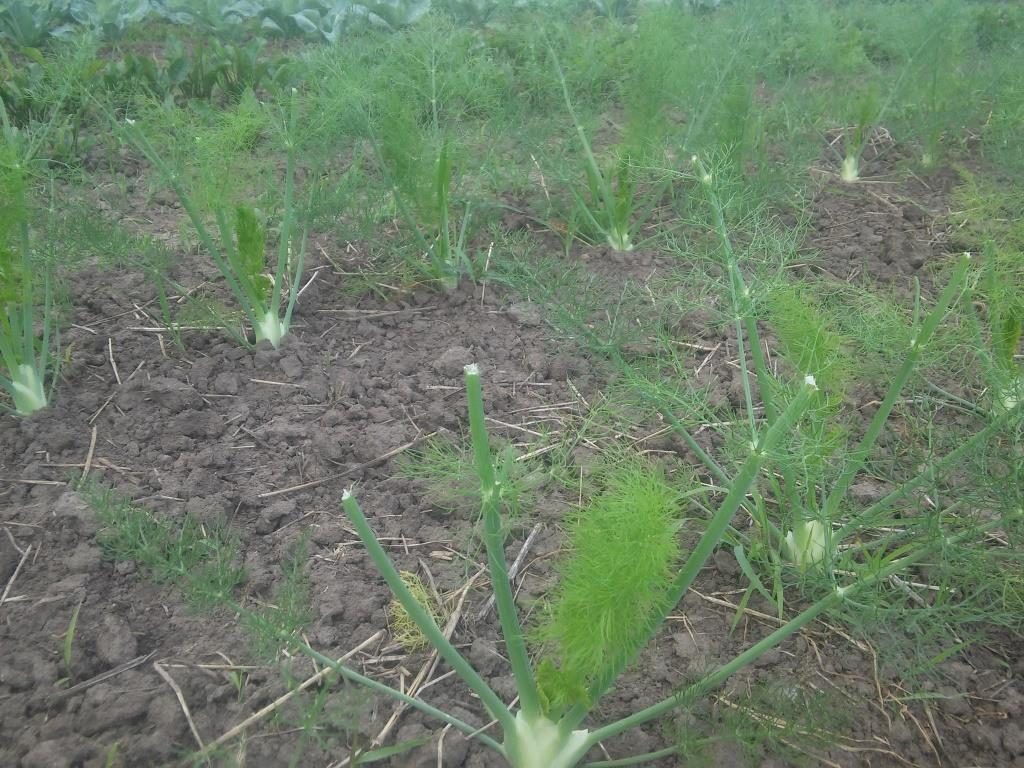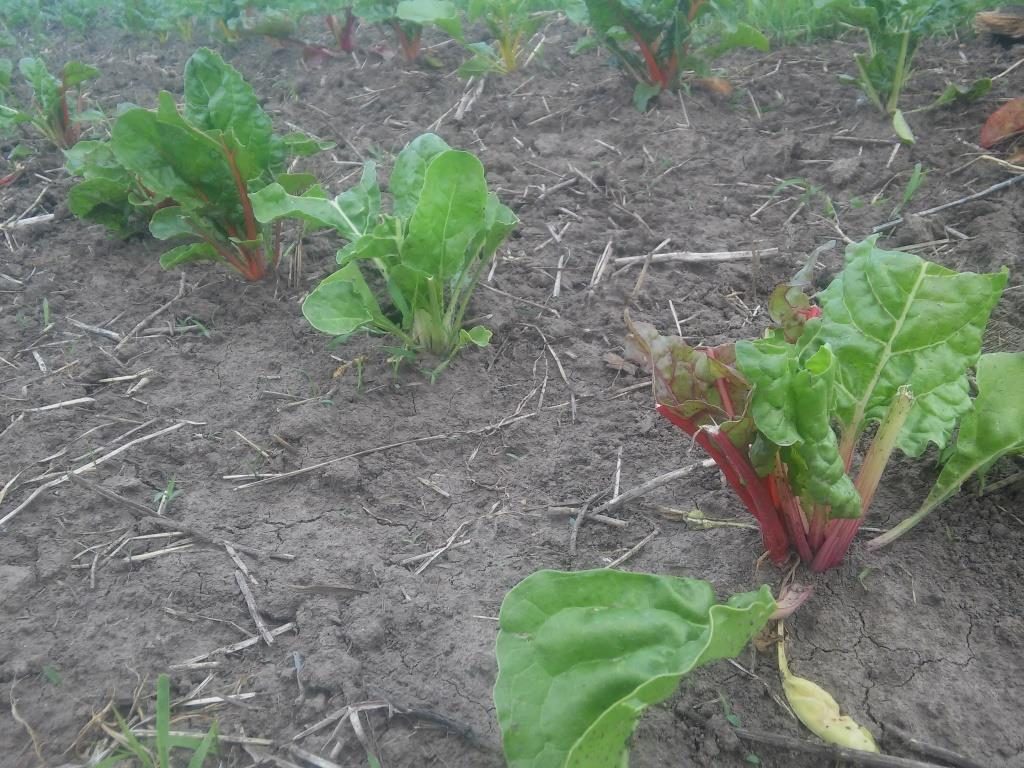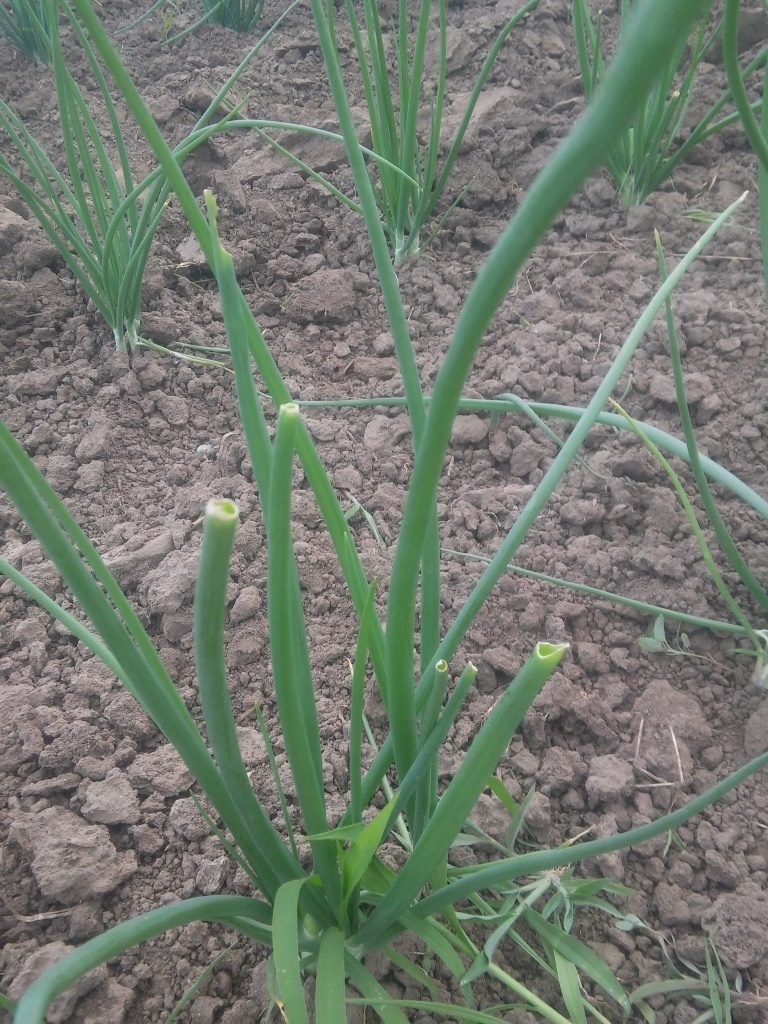
What’s happening at the farm? Well I’ll tell you, but first some announcements.
Another reminder that next week is the week of July 4th. We plan to be open for pick-up and plan to deliver that day. If you pick-up at a drop site and do not want us to deliver your produce please let me know ASAP. If you pick-up at a drop site and prefer to pick-up at the farm on a different day please let me know ASAP. If you pick-up at the farm and want to change to a different day please let me know ASAP.
Farm News

This season so far has been challenging in one respect — deer. As the title of the newsletter states, unfortunately “The Buck Stops Here…” as do the does and the fawns. What is remarkable this season is they have a hankering for fennel. Anise flavored venison? I don’t recall them passing up the beets for fennel in the past. I’m happy for those who like beets — for now. Disappointed for those who like fennel. On the bright side when they eat fennel they leave most of the plant in place so it has a chance to recover and grow to maturity. Frequently with beets they pull them out of the ground and leave them to dehydrate on top of the soil. Deer are quite wasteful.
However my biggest deer disappointment is the peas. With the late start we were only able to plant two of the usual three pea plantings. The first planting is typically the best and it is the one we skipped since there was still snow on the ground when we generally plant them. The second planting was looking reasonably good until last week when the deer came through and ate the tops off half the pea plants. There is such a short season for these tasty morsels that losing any to pests is a huge disappointment. And this pea season being even shorter exacerbates the disappointment.

We’ve taken steps to try to reduce the deer problem but when we solve it for one crop they just more on to the next. We started seeing damage to our lettuce so we covered it with plastic mesh. Then they moved to the chard so we put up pie tins they clink and clank to hopefully scare off the deer. Putting up a fence is prohibitively expensive and unsightly. Covering all the crops with mesh is expensive, time consuming and makes work that much more difficult since the cover needs to be removed and reinstalled every time we need to cultivate, hoe, or harvest. Our next idea is to try talk radio all night to deter the deer. Who wants to listen to that? The horses may be disgruntled though.

What will we have this week?
Before I tell you I must inform those who are new to the farm how this part of the newsletter works. Here I give an overview on what you can expect this week. It will include everything we plan on giving out. However, much like deciphering the statements from the Federal Open Market Committee of the Federal Reserve, interpreting the information presented here can be a challenge. Here are a few key phrases to help you be successful analyzing the information.
If I say “lots” in front of something you can assume you will get this item. If I say “some” it will be matched with other “somes” since there isn’t enough of any of these items for all shares to get some. If I say “a few” it means there isn’t very many of these items. This usually occurs near the beginning of a given crop’s season when it is ramping up or the end where it is ramping down. If I repeat an item — especially multiple times — it is either a mistake or a clever way to tell you to have plenty of appetite for that item because there is more than a lot. If there is nothing in front of the item you’ll probably get it. Let’s see this in action with this week’s list.
This week we will have lots of lettuce, lots of bok choi, lots of green onions, lots of shallots stored over the winter, some chard, some kale, a few broccoli, a few radishes, and garlic chives.
Ok, lets parse this out. We see the word “lots” in front of lettuce, bok choi, green onions and shallots. This means if you get a box delivered you will get these items. If you pick-up at the farm you probably won’t have a choice on these items. We have the word “some” in front of chard and kale. This means there is not enough chard or kale for all the shares so they are probably matched with other items (or each other). For on-farm pick-up you will have a choice and most likely, unless one item is more favored over the other, there is enough of each for everyone to have a choice. For delivery boxes we likely will include the item unless it is something you got last week. That way we can distribute the items between on-farm and delivery shares.
We have “a few” in front of broccoli and radishes. First this implies they are either ramping up or ramping down. I would guess since we haven’t had them yet they are ramping up. After this it gets tricky. If we have only a few the destination depends on how many and if it was given out previously. For delivery boxes if you have received the item last week you probably won’t get it again this week. And even if you haven’t received it previously you may not get it this week. We try to keep the FamilyShares consistent and the CoupleShares consistent. If there isn’t enough of the item for all the FamilyShares or all the CoupleShares for the week you may not get it this week but likely will get it next week. If you pick-up at the farm there may not be any left when you pick-up or we are saving the item for another day that didn’t get it last week.
Now let’s use this week’s example to figure out what you can expect in a FamilyShare delivery box. We’ll leave the CoupleShare delivery box contents determination as an exercise for the reader. With a FamilyShare you get three items from each category. A “lots” designation usually signifies it is its own category so a FamilyShare will get three lettuce, three bok choi, three bunches of green onions (actually we just put them in a large bunch), and three shallots. With the “some” in front of kale and chard we’d expect to get some kale and some chard. But wait, you forgot that you had chard last week so this week’s chard will go somewhere else. Hmm, now what? I guess that a FamilyShare would have one of the “few” items then right? Yes! Now you’re getting it! A FamilyShare will get two kale and a bunch of radishes. And of course since the paragraph stated garlic chives with no modifier a FamilyShare probably includes garlic chives.
Now try this on your own for CoupleShare. I will put the correct answer at the end of the newsletter.
Can it be more complicated? Sure. But there is no reason you need to know all the complications. Suffice it to say we put a lot of effort into making everyone’s produce opportunities as fair as possible. Delivery members will get some of everything we grow. On-farm members will get access to everything we grow (where you may choose not to take certain items). Showing up at the beginning of on-farm pick-up does not give you any better selection than showing up later. Tuesday is no different than Wednesday which is no different than Thursday which is unsurprisingly no different than Friday. We may hold back some items for later members if the items are in short supply. The next week if they are still in short supply we may swap which items we hold for later arriving members. Of course the best approach to enjoying your CSA share is to go with the flow and figure out what to make with whatever you get. Don’t try to overthink it.
Well that was a lot more information than was necessary. But since I wrote it I’m not going to delete it. You can just skip it if you wish.
What else will we have this week? FruitShare comes this week and believe CheeseShare is this week but I’ve not yet received confirmation on delivery. No FlowerShare yet.
Plant of the Week
This week I’ll focus on bok choi. Bok choi (also spelled pac choi, bok choy and I suppose pac choy) is a cool season crop we grow mainly in the spring. We sometimes directly seed some in the fall for baby bok choi; it depends on what all is going well or not in the fall. Our biggest problem growing bok choi is managing flea beetles. Flea beetles love bok choi and eat small holes in the leaves. We manage them by covering bok choi with a floating row cover — a lightweight fabric that provides a barrier to keep out the pests. Sometimes the row cover gets a hole in it and allows some flea beetles in but it is the best solution we’ve found.
Being native to Asia using bok choi goes well with Asian flavors. Our favorite method of preparation is to separate the leafy part from the stalky part. Cut the stalky part into bite sized pieces. Stir-fry the bok choi starting with the stalky part then adding the leafy part when the stalky part softens. At the end pour in some soy sauce. You can add other vegetables to this recipe like green onions, garlic chives, or shallots. It’s all good.
Speaking of green onions. If you are unsure what to do with green onions try grilling them. They are quite tasty this way. Just be sure to lay them across the grill grates so they don’t fall in.
That is all for today. Sorry about the length of the newsletter but with the harvest season ramping up I need to get my words in now when I have time. As always do not hesitate to send in questions, comments, suggestions, jokes, puzzlers, etc. I always love hearing from our members!
Here is the correct answer for CoupleShare: two lettuce, two bok choi, two shallots, a bunch of green onions, a bunch of chard, a bunch of kale and a bunch of garlic chives. How did you do?
